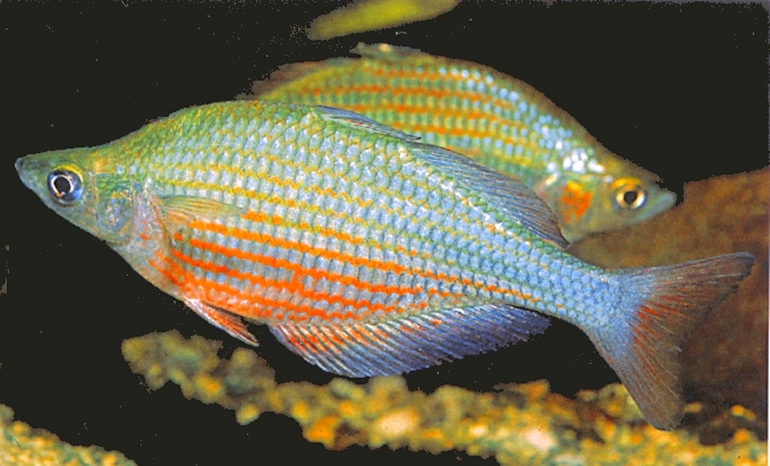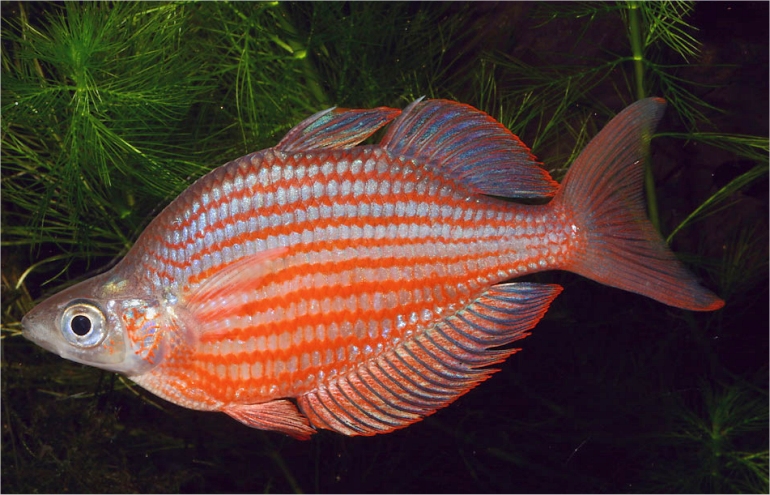|
 |
Glossolepis dorityi - photo© Gerald Allen |
Allen, 2000
Grime Rainbowfish
Species Summary
Glossolepis dorityi males have a body colour that is generally greenish with silvery reflections on the back, nape, and side of head. They have a dull orange or bronze stripe between each scale row of upper half of body; red-orange stripe between each scale row of lower half of body, especially prominent during courtship activities. Fins greenish to translucent, but with pinkish or red-orange hue on ventrals and basal half of anal and second dorsal. Female generally greenish with silvery reflections and lacking orange or red-orange stripes between scale rows. Males generally possess a deeper body and have elongated posterior rays on the dorsal and anal fins. Males may reach a maximum size of 10 cm, but females are usually less than 8 cm SL. This species is named dorityi in honour of Dan Dority for his efforts in collecting the type specimens.
Distribution & Habitat
Glossolepis dorityi is currently known only from the Grimé River region of northern West Papua. The area was formerly known by the Dutch administrators as the Nimboran (Grimé) Plain. It is located roughly 50 kilometres west of Lake Sentani. The type locality consists of a small round lake (Lake Nenggwambu). There is a vigorously flowing outlet stream, but no apparent inlet, indicative of a subterranean connection with neighbouring lakes via the limestone substratum. Water was relatively clear and maximum depth was estimated to be at least 10-15 m. The lake is surrounded by secondary forest and aquatic plants were abundant, but relatively few species were evident. Fishes were most strongly congregated around the outlet, where vegetation was very dense. Glossolepis dorityi was the most abundant fish species and a second rainbowfish, Chilatherina fasciata was also common.
 |
Glossolepis dorityi [Lake Jaigum] - photo© Gary Lange |
Remarks
Dan Dority and David Price collected Glossolepis dorityi in April 2000. Heiko Bleher first discovered this species in May 1999 in Lake Kali Biru (Lake Nenggwambu), but was unable to collect any specimens. However, in a nearby lake (Lake Jaigum) he collecting specimens of the same species. Unfortunately only two males survived the journey back to Europe. He returned in November of the same year - but once again was unsuccessful in collecting specimens. However, during his third journey, at the end of 2000, he succeeded in catching six adult specimens. He also collected more specimens from Lake Jaigum. He eventually returned to Europe with four males and one female. Varieties from both lakes are currently available in the hobby.
Literature
Allen G.R. (2001) A new species of rainbowfish (Glossolepis: Melanotaeniidae) from Irian Jaya, Indonesia. Fishes of Sahul - Journal of the Australia New Guinea Fishes Association 15(3): 766-775.
Adrian R. Tappin
Updated August, 2015



|
|

